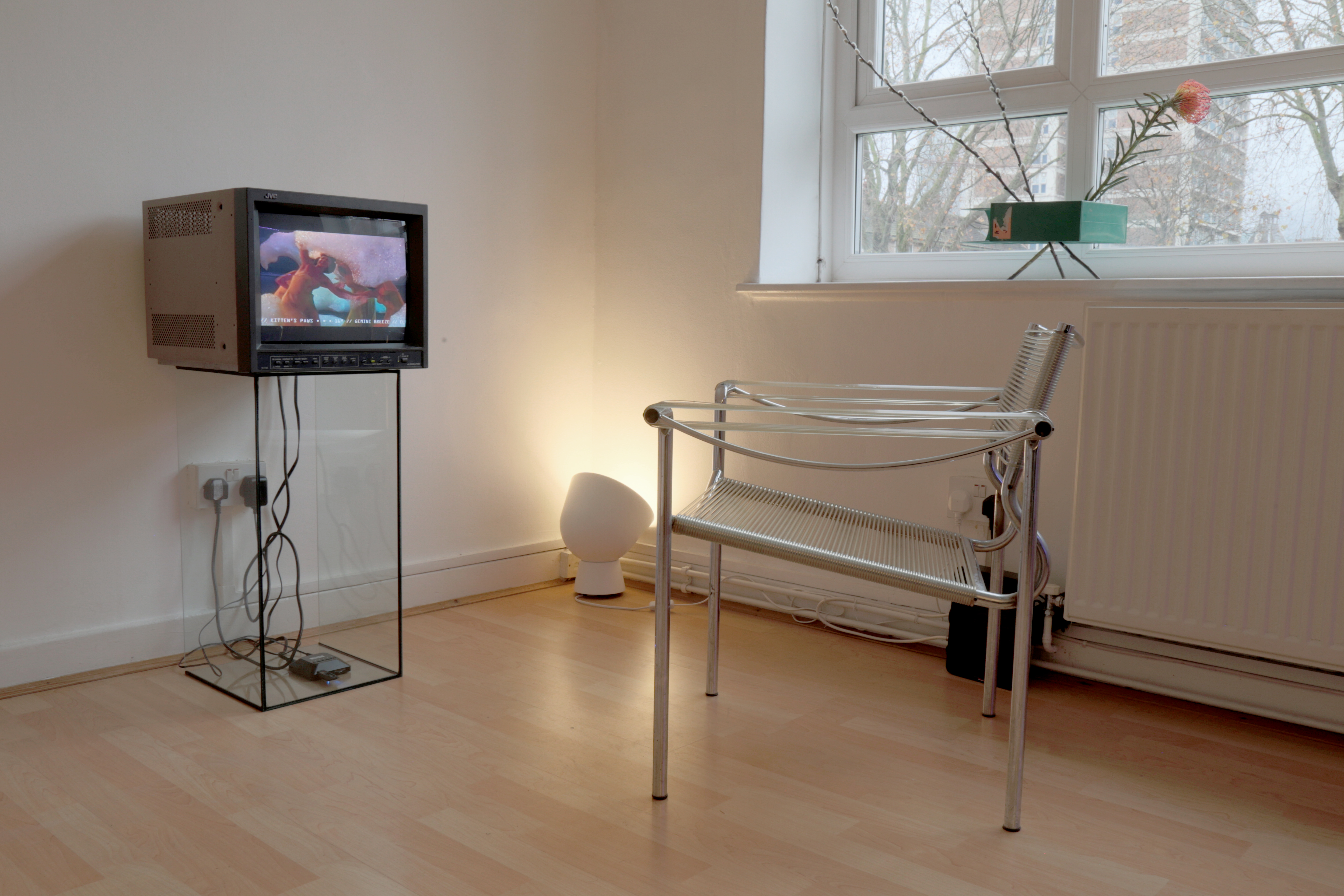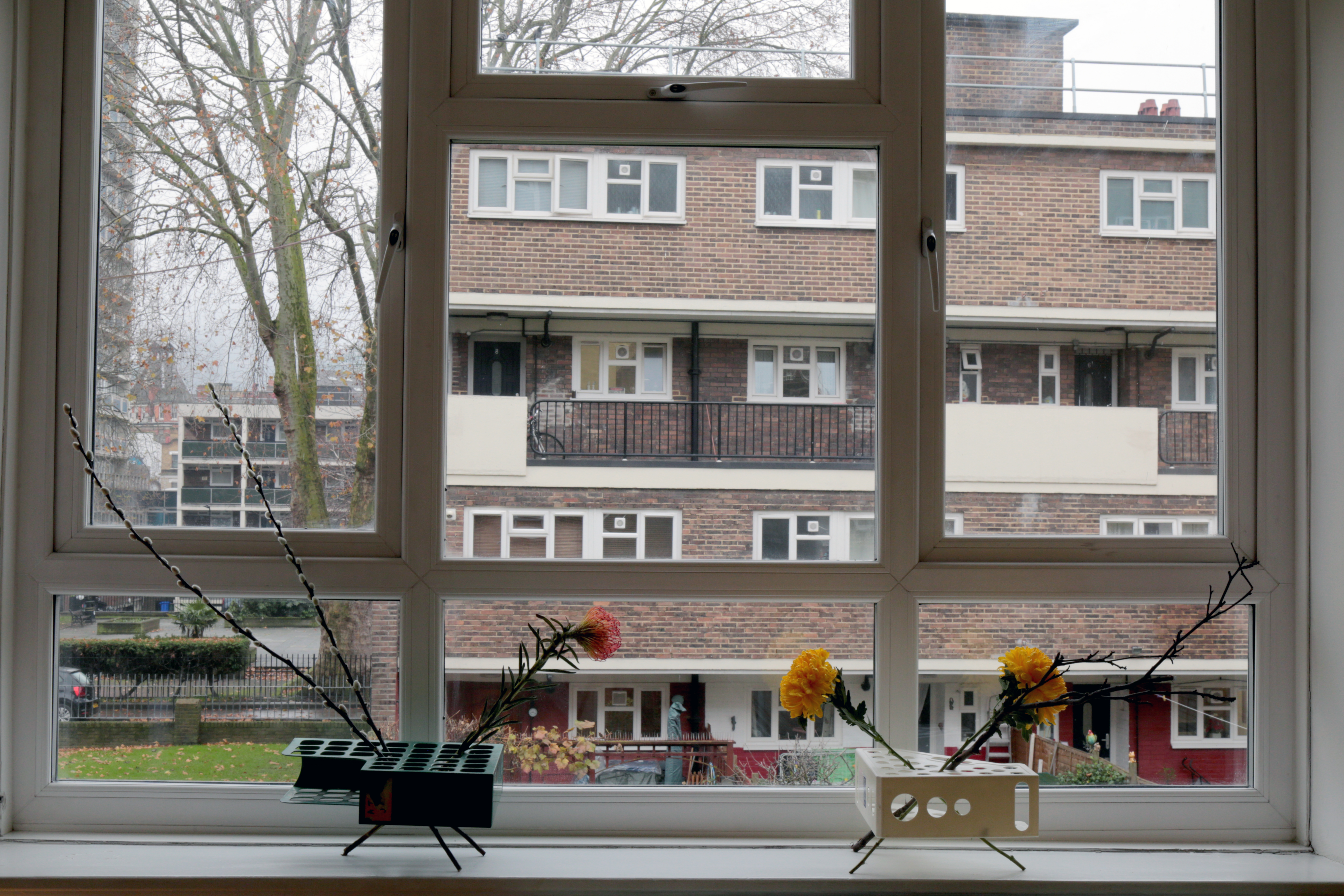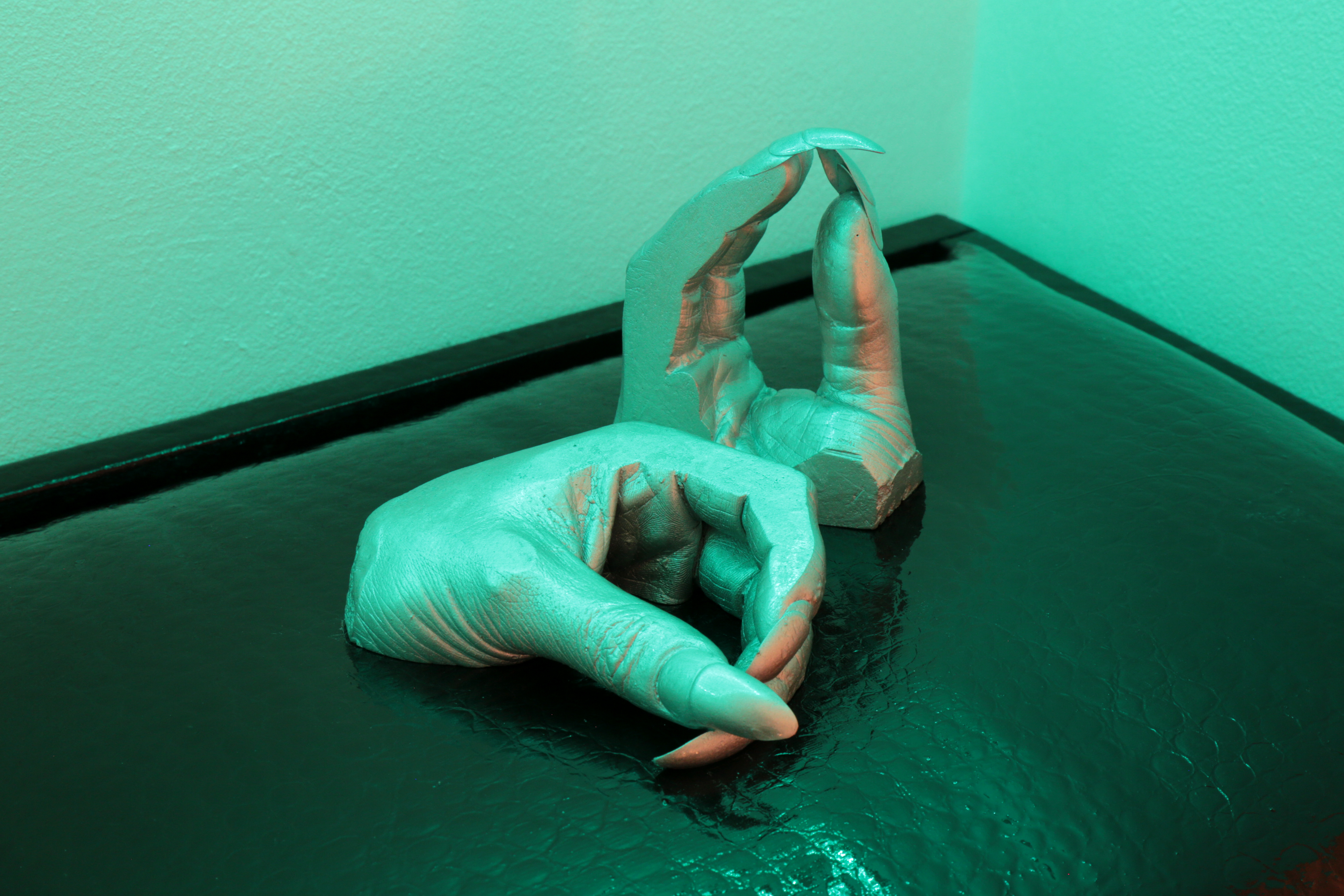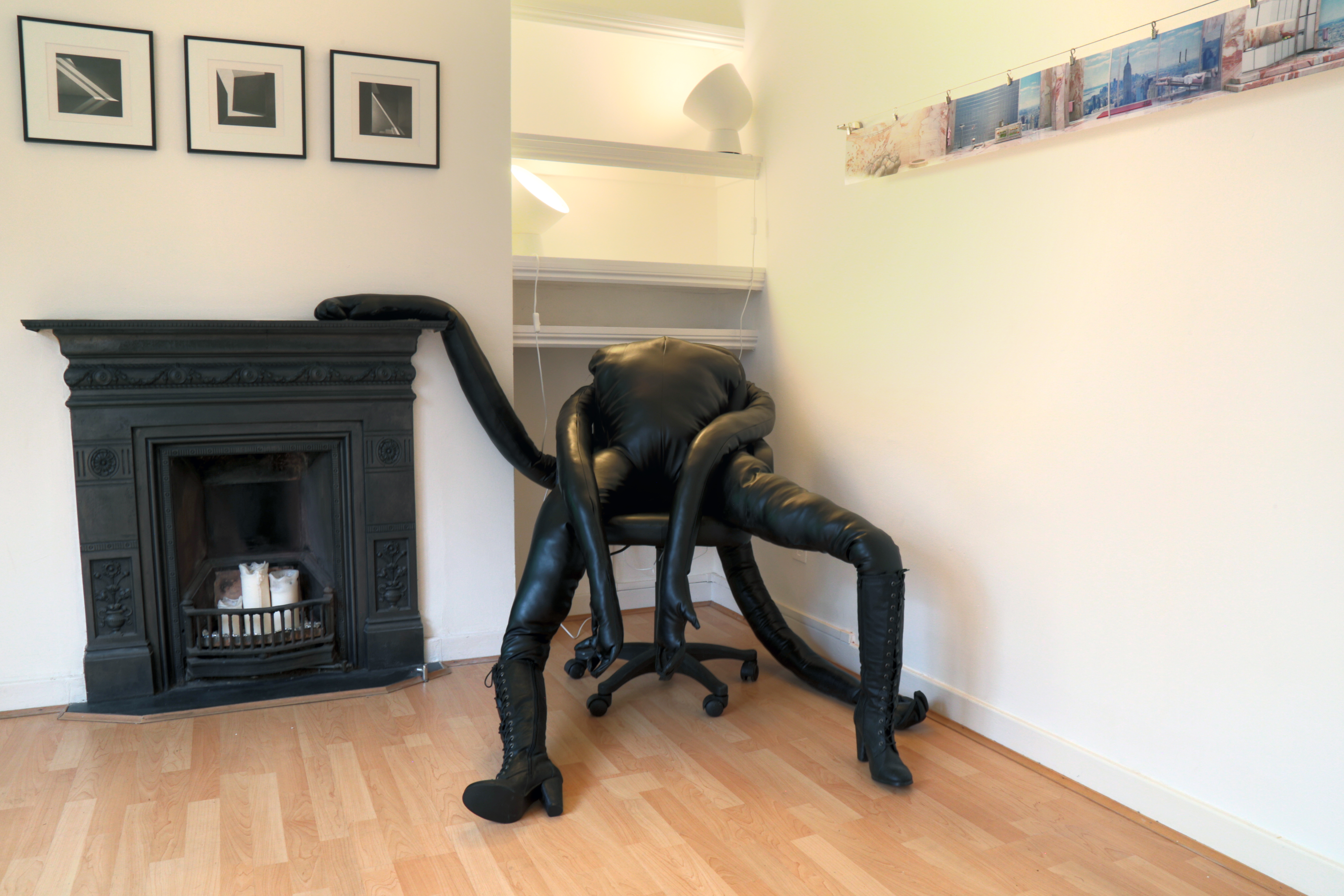Housewarming
Maison Touchard, London, UK
23 November - 15 December 2019
Maison Touchard, London, UK
23 November - 15 December 2019

John Smith, Hackney Marshes – November 4th 1977 (1977), courtesy the artist and LUX, London.
“If we...look at the question [of the house] from a critical and objective point of view, we shall arrive at the “House-Machine,” the mass-production house, healthy (and morally so too) and beautiful in the same way that the working tools and instruments which accompany our existence are beautiful. Beautiful also with all the animation that the artist’s sensibility can add to severe and pure functioning elements.”
Le Corbusier, 1925[1]
Maison Touchard presents Housewarming, a group exhibition featuring the work of Jemma Appleby, Alice Bucknell, Vanessa Dziuba, Shawn Maximo, Lindsey Mendick, and Camille Yvert.
Marking the launch of Maison Touchard, a project space set in an East London council flat, Housewarming explores the dichotomy between the utopian origins of Modernist architecture – inherently moralistic ideals of purity, transparency, light, and function – and its failed and rebellious legacies, namely within the prescriptive urban renewal and public housing schemes that began to appear en masse in the second half of the 20th century. The doctrines of the International Style – the Bauhaus’ appropriated ideology of “form follows function”, Le Corbusier’s calculating conception of the house as a “machine to live in”, and the embrace of mass-produced materials such as concrete – appealed greatly to urban planners seeking to stow away unwanted elements (whatever and whoever did not fit into their vision of a clean, modern city) wholesale under the guise of social welfare. Consider New York’s projects, Paris’ grands ensembles, or London’s council estates: soulless blocks of concrete and brick ill-equipped to accommodate the complex and messy vitality of the inhabitants they are meant to serve. Taking this context into account, the works included in this exhibition address and embody the fundamental paradox that hovers in the tension between public and private, mechanical and organic, function and form.
Vanessa Dziuba’s vase sculptures, La villa Savoye (2019), adopt as readymades the household organizational items she encountered in Japan. The cheap, uniform, and functional qualities of two magazine racks are used to emulate Le Corbusier’s eponymous villa. Dziuba infuses the rigid structure associated with Modernist architecture with the practice of Ikebana, the Japanese art of floral arrangement. In the tension between the generic function of a mass-produced object, and the inherently decorative and ephemeral nature of cut flowers, a shared dialogue around the search for beauty and utility emerges.
The conflation between rigid formality and an organic presence is likewise explored in Jemma Appleby’s series of charcoal drawings (all 2017). The absence of all ornament and human trace in Appleby’s seductive interiors is thrown into question by her very method of creation, whereby she applies the ground pigment directly onto the paper using her fingers. These abstract compositions of shadow and light draw the eye into the depths of their illusory space before confronting it with their flat impenetrability, alluding perhaps to Modernism’s unfulfilled promise to optimize the conditions of urban dwelling and by extension, life.
Informed by strategies used by inhabitants to adapt their prefabricated homes to their daily needs, Camille Yvert’s Pride and Ornament (2019) resembles a store-bought storage solution, though has been specifically designed to fit into the alcove where it stands. Upholstered in flashy faux snakeskin and embellished with ornate handles, the sculpture’s maximalist aesthetic points to the assertions of individual tastes that defiantly clash with the impersonal, almost carceral, prescriptions of serial housing.
In Lindsey Mendick’s anthropomorphic sculpture, I’ve Got You (2019), arachnoid appendages bound in leather emerge from a mass-produced office chair common to corporate environments. The chair, a cheap and diluted distortion of the famous models designed by the Modernist duo Charles & Ray Eames, suggests a fetishisation of the current work cultures under late capitalism. Similarly, in Gym Freaks (prosciutto) (2015), Shawn Maximo imagines a hyper-luxurious and dystopian interior featuring many design principles of the International Style, in which the socio-economic conditions of neoliberalism have eroded the boundaries between work and home, labour and leisure.
Alice Bucknell’s speculative video Weather Watch (2019), is set in 2038 and reflects on the terrible effects of the Planetary Degrowth Act through a montage of changing weather systems and found footage. The degrowth act is a worldwide ban on new concrete construction in response to the climate crisis, issued by a new Paris Agreement signed by 41 nations in Dubai on November 11, 2030. Countries are forced to tear down monuments and past architectural prides from modernist towers to housing blocks, leading to a neoliberal nationalist frenzy, wherein countries take drastic measures to continue urban growth at all costs.
~ Mélanie Scheiner & Clémentine Proby








© Samuel Capps
[1] Le Corbusier. Vers Une Architecture. Paris: Les Editions G. Crés et Cie, 1925. p.187.
